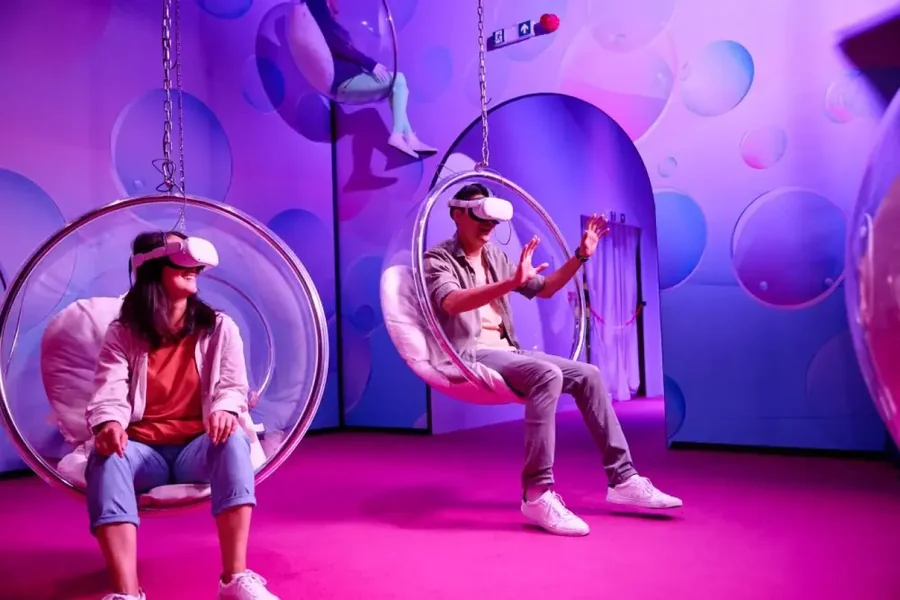Environmental storytelling is a powerful narrative technique used to immerse audiences in a world through its surroundings, objects, and ambiance rather than relying solely on traditional dialogue and plot structures. It is a method that allows the environment to act as an active participant in storytelling, weaving its own narratives through design, detail, and atmosphere. This technique has gained significant attention in various fields such as video games, architecture, film, literature, and theme park design. By the end of this article, you’ll gain a comprehensive understanding of environmental storytelling and how it can be employed to enhance the user experience in your creative projects.
What is Environmental Storytelling?
At its core, environmental storytelling involves the process of conveying a narrative through the use of physical spaces and elements rather than through direct narrative techniques like dialogue or written text. It uses the environment itself as a medium to reveal information, guide the audience’s understanding, and shape their emotional connection to the world around them.
The goal of environmental storytelling is to invite audiences to actively engage with their surroundings and discover the stories hidden within those environments. These stories may be implicit or explicit, giving creators the ability to convey meaning through context, visual cues, and sensory experiences.
In film, for example, a character’s environment can tell you a lot about their inner world—cluttered desks may hint at disorganization, while minimalist, sterile spaces may evoke a sense of coldness or isolation. In video games, environmental storytelling is even more profound. Games such as The Last of Us, BioShock, and Red Dead Redemption use environmental cues to hint at backstories, plot developments, and the emotional state of characters without requiring overt exposition.
The Role of Environmental Storytelling in Different Mediums
In Video Games
Environmental storytelling in video games is perhaps the most intricate and engaging. Games often feature dynamic and interactive environments where every detail serves a purpose. By using environmental storytelling, developers create worlds that feel lived-in and authentic.
For instance, in The Last of Us, players come across abandoned towns, ruined cities, and overgrown forests that tell the story of a post-apocalyptic world ravaged by a fungal infection. The dilapidated houses, rusted vehicles, and discarded personal items provide subtle clues about the lives of people who once inhabited these spaces. The environment reflects the emotional weight of the story and the choices players must make within it. Players uncover these stories through exploration, piecing together a larger narrative from their observations.
Games like Dark Souls are known for their deep and cryptic environmental storytelling. Players can learn about the world’s history by examining ancient ruins, reading inscriptions, or interacting with NPCs. The lore is often hinted at rather than explicitly explained, encouraging players to interpret the environment and immerse themselves in its mystery.
In Architecture and Urban Design
Environmental storytelling is also deeply embedded in the world of architecture and urban planning. Buildings and public spaces can convey stories about a community, its history, and its values. Take the example of historical landmarks—a cathedral, a war memorial, or a courthouse—all these structures offer more than just functionality. They speak volumes about the culture, beliefs, and events that shaped a society.
For example, The Parthenon in Athens, Greece, is not just a building; it is a symbol of ancient Greek civilization and democracy. Its design, scale, and placement all speak to the values of that era. Similarly, the design of Central Park in New York City tells a story about the evolving relationship between urban life and nature.
Urban planners and architects who use environmental storytelling intentionally craft spaces that encourage specific emotional reactions, guide behavior, and shape a city’s identity. For example, a busy plaza may be designed with long pathways to encourage movement, while a park bench in a secluded corner invites quiet contemplation. Every element within an environment can tell a story, whether it’s through design choices, materials, or the way a space is used.
In Films and Television
In film and television, environmental storytelling is often achieved through set design, cinematography, and lighting. Directors use the physical space around their characters to enhance their emotional journeys. Think of the iconic, dimly lit corridors in The Shining or the bustling, chaotic streets of Blade Runner—both of these settings convey important aspects of the characters’ experiences without saying a word.
In The Godfather, for instance, the mansion where the Corleones live is lavish and grand, conveying their wealth and power, while the dimly lit interiors suggest a family history filled with secrets and moral decay. The environment here becomes a silent character that tells the audience more about the world than the dialogue ever could.
In Literature
In literature, authors have long used detailed settings to add depth and richness to their stories. Writers like Charles Dickens often used the environments in their novels to reflect the emotional and moral landscapes of their characters. In A Tale of Two Cities, the contrasting settings of London and Paris are used to emphasize the disparity between the characters’ lives and the political turmoil of the time.
A well-crafted setting in literature can act as more than just a backdrop; it can deepen the themes of the story and help readers connect emotionally with the characters. The dark, oppressive atmosphere in Wuthering Heights, for instance, mirrors the tumultuous and destructive relationship between Heathcliff and Catherine.
Key Elements of Environmental Storytelling
1. Design and Layout
The design of an environment plays a crucial role in storytelling. The way a space is laid out—its color palette, textures, objects, and architecture—can reveal much about its narrative. In video games, a cluttered room might tell the story of a disorganized or troubled character. A pristine, symmetrical room might suggest someone with a need for control or order.
In architecture, the layout of a city or neighborhood tells the story of its people. A gated community might suggest exclusivity or wealth, while a run-down neighborhood might hint at poverty or neglect. The design choices made within a space are vital to environmental storytelling.
2. Props and Objects
Objects within an environment are often used as a narrative device. These props can reveal history, provide context, or add depth to the world. In video games like BioShock, every object, from an old book to a broken-down machine, is part of a larger story. Similarly, in film, props like photographs, letters, or personal items in a character’s home can give viewers insight into the character’s life and emotions.
Even the simplest of objects can speak volumes. A child’s toy left abandoned in a room hints at a tragedy or loss. A weapon resting on a table may symbolize a character’s readiness for battle, both physically and emotionally.
3. Atmosphere and Lighting
Lighting and atmosphere are powerful tools in environmental storytelling. The use of light and shadow can influence the mood of a scene and convey deeper layers of meaning. A dimly lit room might evoke feelings of mystery or danger, while bright, open spaces could signify hope or joy.
In the world of video games, lighting can also be used to guide players’ attention. A well-lit doorway might beckon players forward, while darker areas might create a sense of unease or danger. The atmosphere within a scene—be it serene, tense, or ominous—speaks volumes about the emotional landscape of the narrative.
4. Sound and Music
Sound and music can elevate environmental storytelling. In a film, the distant sound of a clock ticking can suggest tension or the passage of time. In video games, background noises like the wind rustling through trees or the faint hum of machinery help immerse players into the world, adding layers of depth to the environment.
Sound can also serve as a narrative tool. The sudden silence in a scene can communicate isolation or fear, while cheerful music can indicate hope or joy. Soundscapes play a subtle yet powerful role in environmental storytelling.
How to Use Environmental Storytelling in Your Projects
Whether you are creating a video game, designing a space, or crafting a story, environmental storytelling can enhance the immersive experience for your audience. Here are a few tips on how to incorporate environmental storytelling into your work:
- Focus on Detail: The small, seemingly insignificant details often make the biggest impact. From the worn-out boots by the door to the cracked window in the corner, every object can tell a story.
- Be Consistent: Your environment should reflect the narrative and tone you’re trying to convey. If you’re telling a story of a post-apocalyptic world, every element should reinforce that—be it the desolate, crumbling buildings or the sparse, muted color palette.
- Use Space to Reflect Character: How a character interacts with their environment says a lot about them. A character who spends time arranging their home might suggest an obsessive personality, while a character who leaves clutter everywhere may be a free spirit—or emotionally troubled.
- Create Emotional Impact: Think about the emotions you want your audience to feel and how the environment can evoke those feelings. Do you want them to feel safe, anxious, or excited? Use lighting, sound, and design to create that atmosphere.
- Allow for Exploration: Environmental storytelling is often best when it encourages discovery. Allow your audience to explore and interact with their surroundings to uncover hidden stories and deeper meanings.
Conclusion
Environmental storytelling is a unique and powerful method of communication that transcends traditional storytelling. Whether used in video games, architecture, film, or literature, it enhances immersion and emotional engagement by inviting the audience to interpret and interact with the world around them. By utilizing design, objects, atmosphere, and sound, creators can craft environments that tell compelling stories, adding depth and richness to the narrative. With careful attention to detail and consistency, environmental storytelling can elevate any creative project, providing audiences with a memorable and immersive experience.


